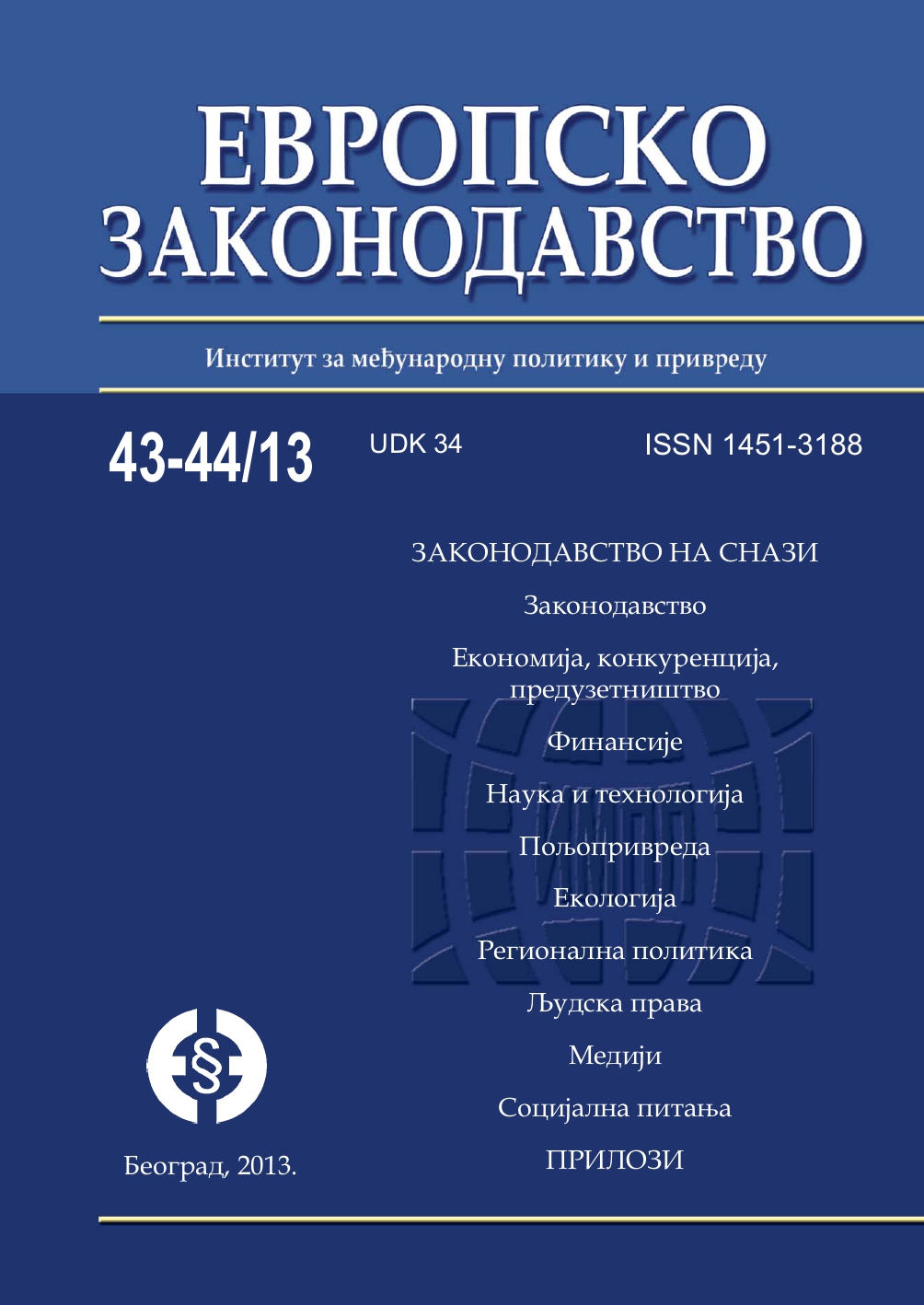Средњерочне економске перспективе ЕУ (2013-2017): значај за Србију
EU Medium-Term Economic Perspectives (2013-2017): Significance for Serbia
Author(s): Goran NikolićSubject(s): Economy
Published by: Институт за међународну политику и привреду
Keywords: EU;medium-term projections;GDP;foreign trade;FDI;interpolarity;Serbia
Summary/Abstract: Relative economic decline of the EU is a trend that lasts for more than a decade. The EU’s share of global GDP has steadily fallen since 2000 (when it was one third) and the IMF estimates that, after a quarter of 2012, will fall to one-fifth in 2017th. The major reason for this trend is the practical decade long stagnation of the industrial production, which has reduced its stake in the cumulative GPD of EU and in the world industry. The share of the EU in global trade over the last decade has been constantly decreasing (from about a fifth to less than one sixth of the world trade) and it is estimated that this trend will continue in the medium term. The EU’s share in global FDI flows in the same period also shows a downward trend, and we have a similar medium term projections. When it comes to the development of new poles of global power, inter-polarity, an edited version of multipolarity with an emphasis on interdependence in the economic sense, is the best option for the EU. Eurozone crisis affect Serbia, among other things, through the financial sector, as banks with foreign ownership (predominantly from the EU), which hold three-quarters of banking assets, loans to the Serbian economy in an increasingly smaller scale. In addition, the inflow of FDI from the EU is strongly slowed down. The recession in the euro zone is reflected in a decline in import demand in Italy, Germany and the neighboring countries, which significantly slows Serbian exports.
Journal: Европско законодавство
- Issue Year: 2013
- Issue No: 43-44
- Page Range: 137-152
- Page Count: 16
- Language: Serbian

